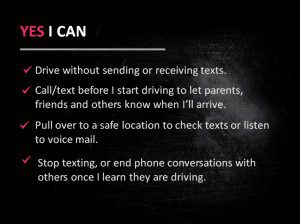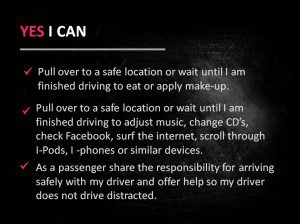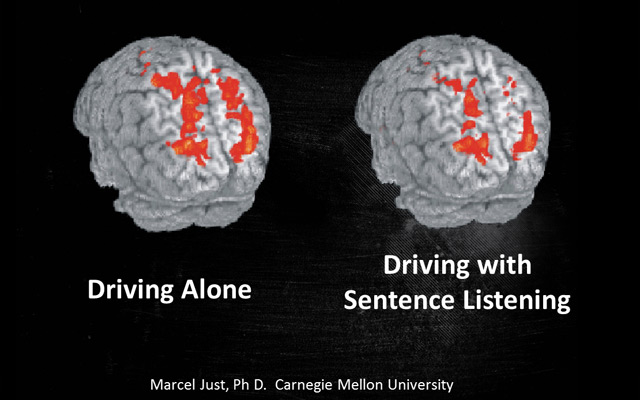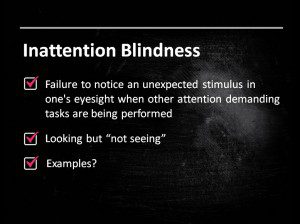
- Home
- Preview The EndDD.org Adult Presentation
Our presentation was scientifically designed to engage audiences without creating defensiveness or resistance. Our collaboration with psychologists, traffic safety and behavior change experts resulted in a highly interactive and fun presentation that is changing attitudes and behaviors about distracted driving. The presentation has successfully been given to community groups and businesses across the country, including hospitals and other health professional groups, pharmaceutical manufacturers, utility companies, construction companies, manufacturers, and trucking companies. Whether you are an employer concerned about your employees driving habits or responsible for supervising drivers, a commuter, or a mom or dad, this presentation will change the way you and those in attendance think about driving. The complete presentation takes 60 minutes, but can be modified to 45-75 minutes and customized to meet your specific needs.
Here is a preview of the presentation
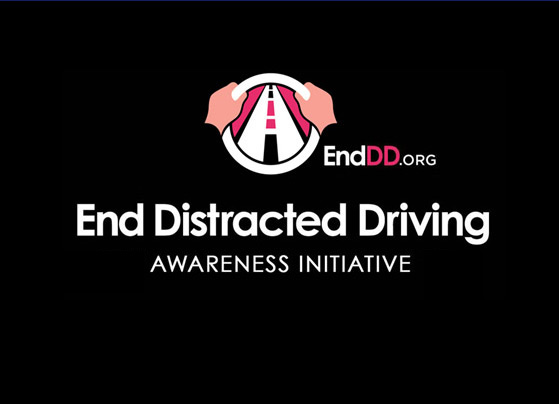
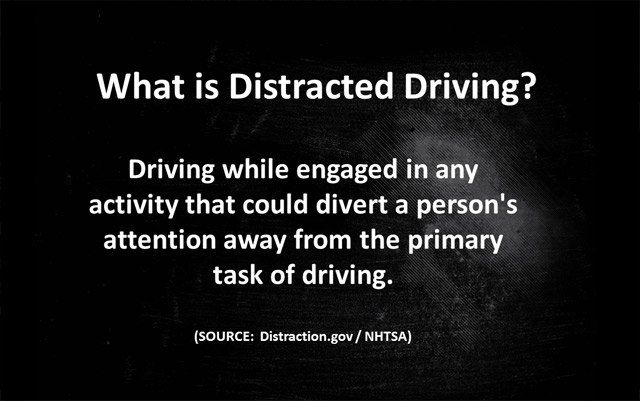 Texting, making cellphone calls, eating, putting on make up, changing music, reaching for objects… the list of activities that put all of us, not just teens, at risk, is endless. Learning about the 3 types of distractions provides a context for subsequent discussions, videos and interactive exercises.
Texting, making cellphone calls, eating, putting on make up, changing music, reaching for objects… the list of activities that put all of us, not just teens, at risk, is endless. Learning about the 3 types of distractions provides a context for subsequent discussions, videos and interactive exercises.
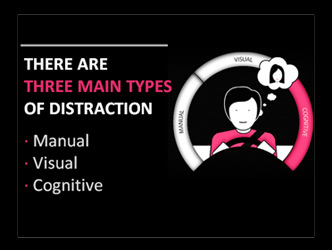

Joel Feldman, founder of EndDD.org holds a photo of his daughter Casey, who was killed by a distracted driver, and tells audiences that he drove distracted—until his daughter’s death changed the way he drove. Most of us realize that when we take our eyes off the road to text, look at e-mails or navigation devices we are taking chances… but we do so anyway. Why? Why do we take chances driving and often with those that we love most in the car with us? 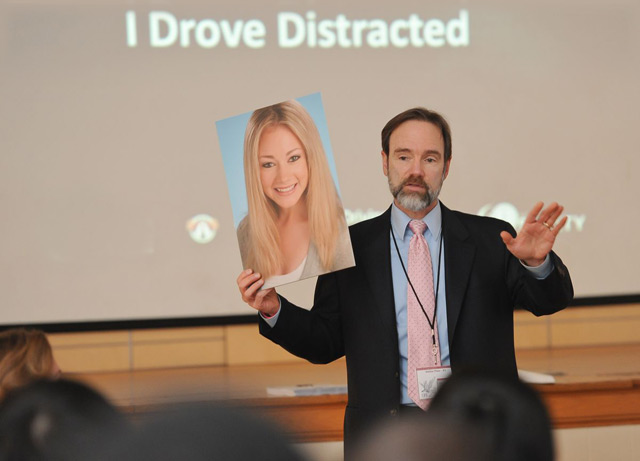 Role play scenarios, like the one depicted below, are fun and provide an opportunity to explore why we take chances driving, why we make excuses for our driving and often are critical of other drivers engaging in the same activities.
Role play scenarios, like the one depicted below, are fun and provide an opportunity to explore why we take chances driving, why we make excuses for our driving and often are critical of other drivers engaging in the same activities. 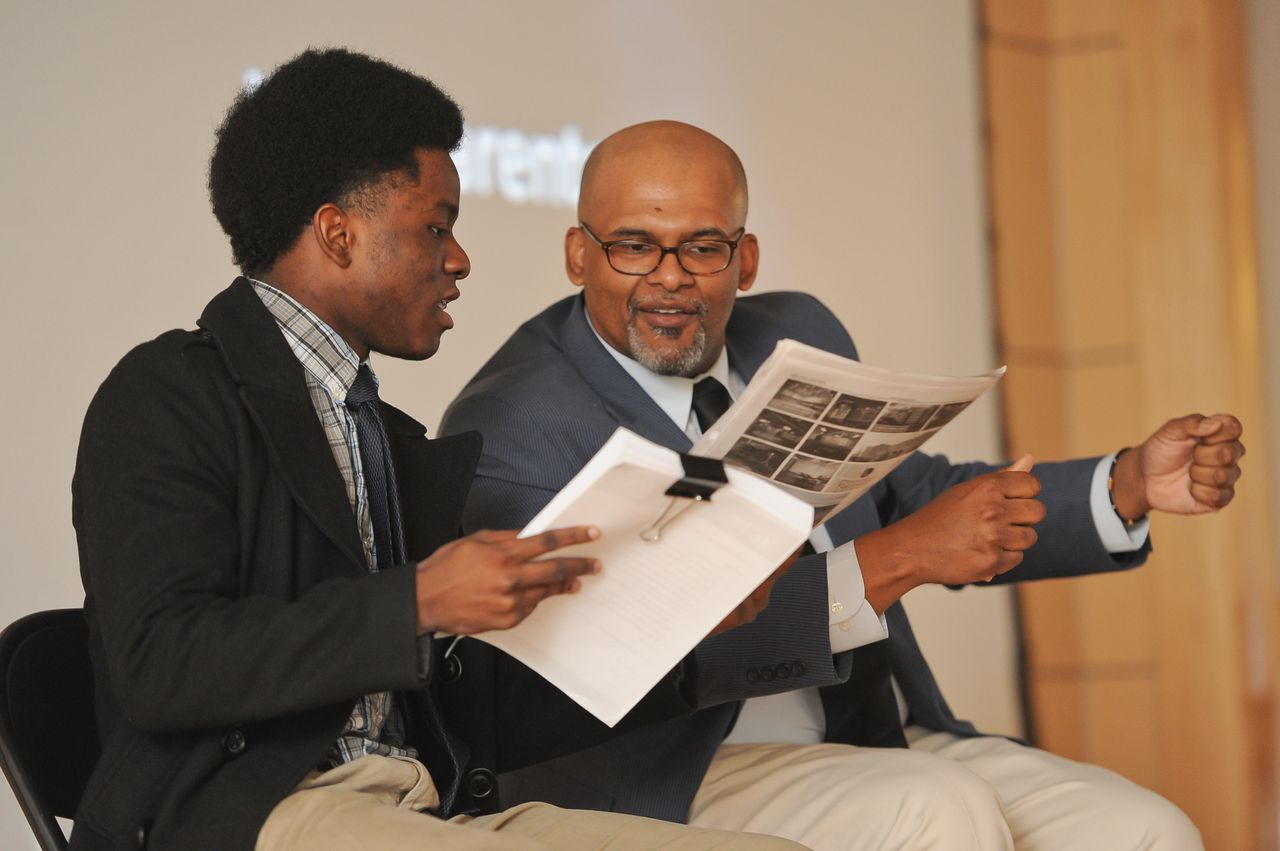 Exploring the concept of role models is part of the design of the program to have adults critically examine their driving attitudes and behaviors, as well as those of their colleagues, employees and friends. We invite consideration of whether we are being good role models for our co-workers and even our children. Perhaps as adults we drive distracted but tell our children not to. What have we been teaching our children about distracted driving and what might we need to change going forward?
Exploring the concept of role models is part of the design of the program to have adults critically examine their driving attitudes and behaviors, as well as those of their colleagues, employees and friends. We invite consideration of whether we are being good role models for our co-workers and even our children. Perhaps as adults we drive distracted but tell our children not to. What have we been teaching our children about distracted driving and what might we need to change going forward? 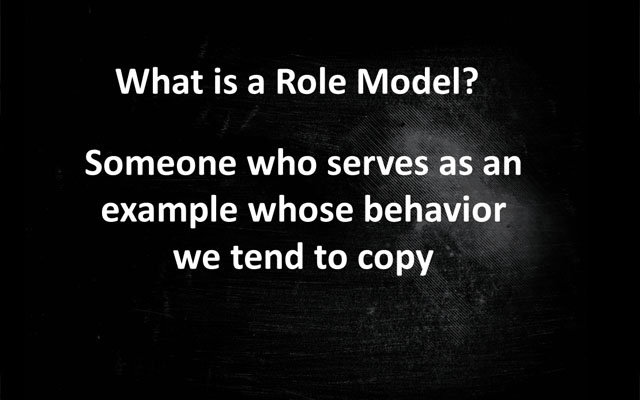 Our PSA, “Just A Few Seconds,” tells the story of a 17-year-old who took a life when she took her eyes off the road for just a few seconds to program her GPS. And how those few seconds changed forever her live and the family of the man who she killed. Texting and cell phone use of any kind is involved in less than 40% of distracted driving crashes; so there are many other types of dangerous driving distractions, like programming a GPS, eating, or applying make-up. We explore how distracted driving is ultimately a choice that can have life-long consequences. While some of the videos are sad we stress that ultimately every sad story is 100% preventable and that each of us has a choice when we get behind the wheel of a car.
Our PSA, “Just A Few Seconds,” tells the story of a 17-year-old who took a life when she took her eyes off the road for just a few seconds to program her GPS. And how those few seconds changed forever her live and the family of the man who she killed. Texting and cell phone use of any kind is involved in less than 40% of distracted driving crashes; so there are many other types of dangerous driving distractions, like programming a GPS, eating, or applying make-up. We explore how distracted driving is ultimately a choice that can have life-long consequences. While some of the videos are sad we stress that ultimately every sad story is 100% preventable and that each of us has a choice when we get behind the wheel of a car.
Will we be safe drivers or lucky drivers?
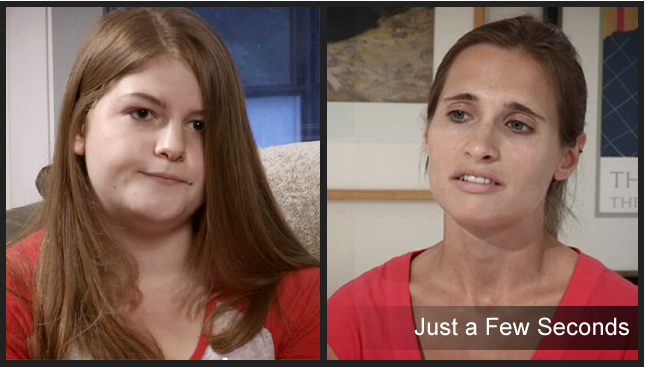
 Just because its not illegal doesn’t mean its safe
Just because its not illegal doesn’t mean its safe
Texting and cell phone use by younger drivers is illegal in many states. But there are other types of distracted driving that are not illegal. This humorous video reinforces the concept that distracted driving is much more than just cell phone use.
Are our brains “wired” to multi-task?
There are real risks associated with talking on a cell phone while driving-even if it is hands-free. A quick lesson in brain function, followed by some interactive exercises, demonstrates that our brain’s ability to multi-task is very limited. Once we add a secondary task, like having a cell phone conversation to the primary task of driving, we overload our brains with potentially deadly consequences.
While we would not drive drunk many of us will drive distracted
When asked if they would consider driving at or above the adult legal limit of .08 for blood alcohol, everyone says they would not. But when asked if they would consider texting or talking on the cell phone while driving, many honestly say they would. Studies indicating that the risk of an accident is similar for talking on a cell phone and driving at the .08 limit are eye-opening.
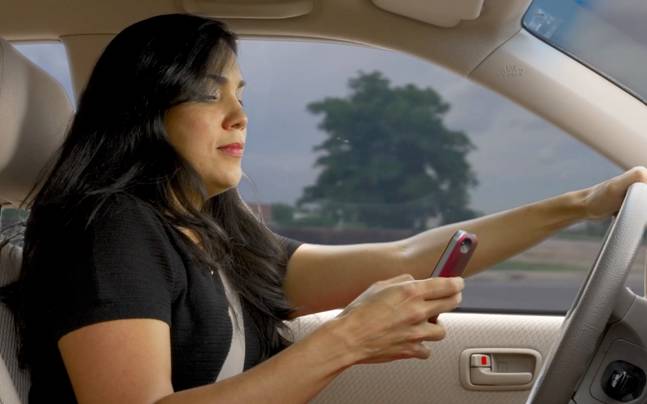

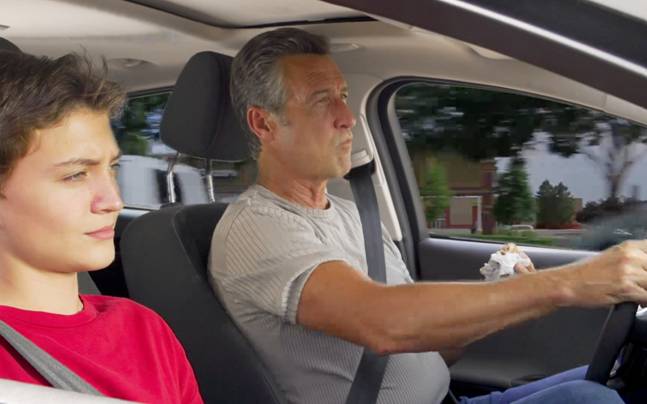
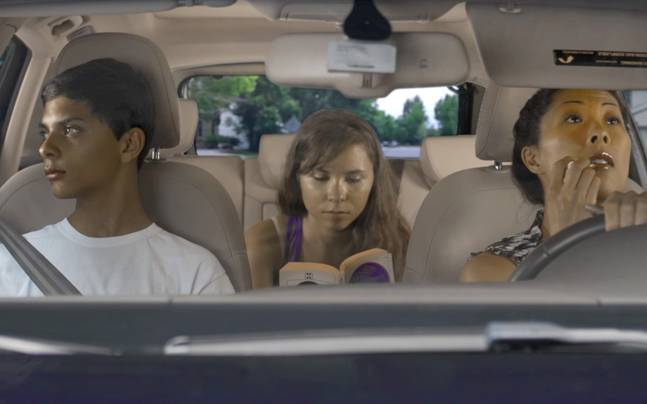
 What are the legal consequences of distracted driving?
What are the legal consequences of distracted driving?
Tickets, crashes, loss of job or much worse. What laws are applicable to distracted driving? Why should employers be very concerned about their employee’s distracted driving?
 Employers are responsible for the actions of their employees and may be responsible for not only compensatory damages but punitive damages when sued. All of the slides, discussion points, videos and exercises are pulled together to develop simple and effective steps to keep all of us safer. Steps that families can take and businesses can take that will save lives.
Employers are responsible for the actions of their employees and may be responsible for not only compensatory damages but punitive damages when sued. All of the slides, discussion points, videos and exercises are pulled together to develop simple and effective steps to keep all of us safer. Steps that families can take and businesses can take that will save lives.
What can you do to protect your employees and co-workers?
